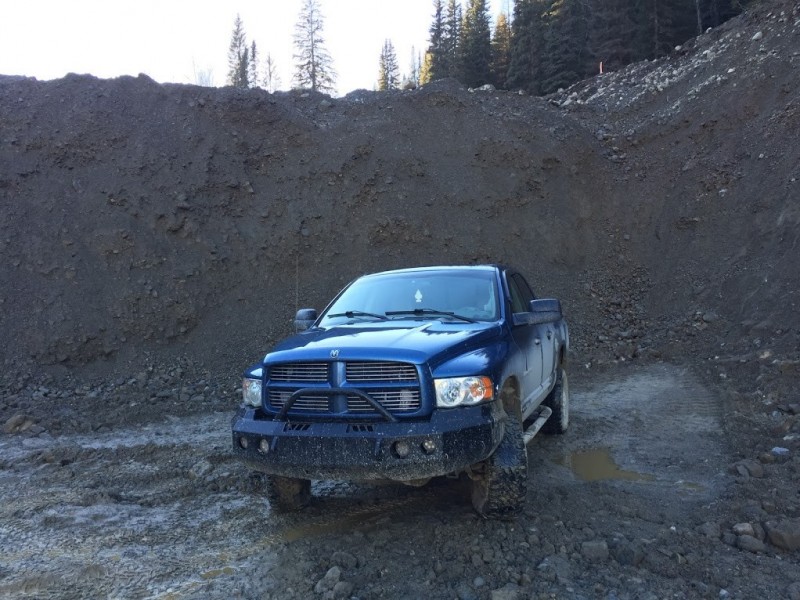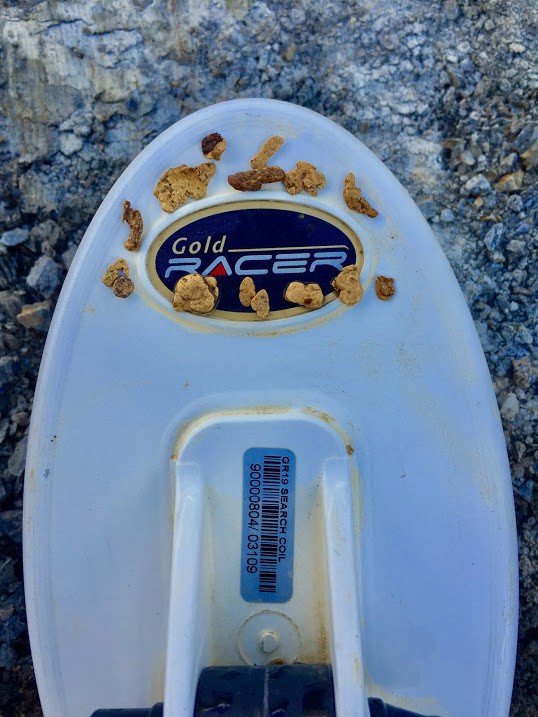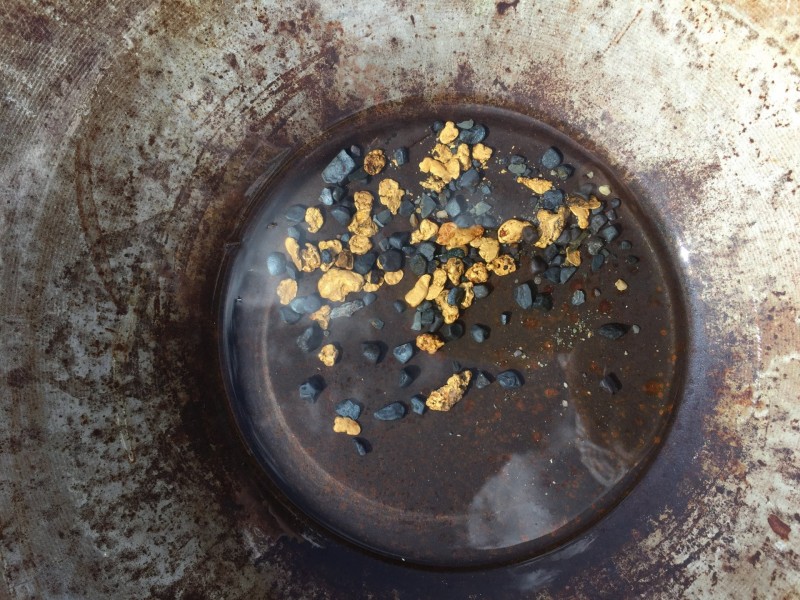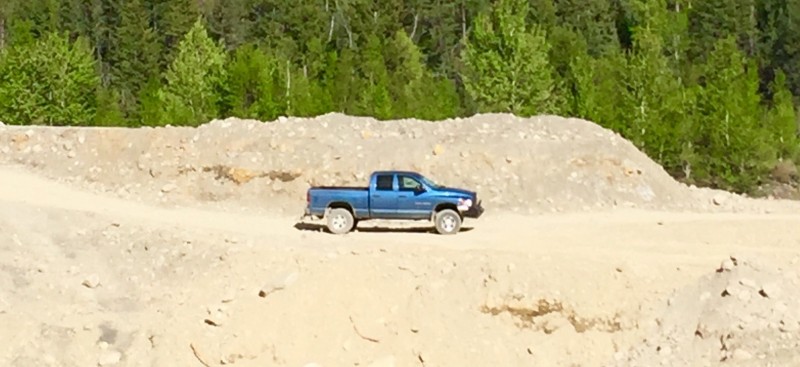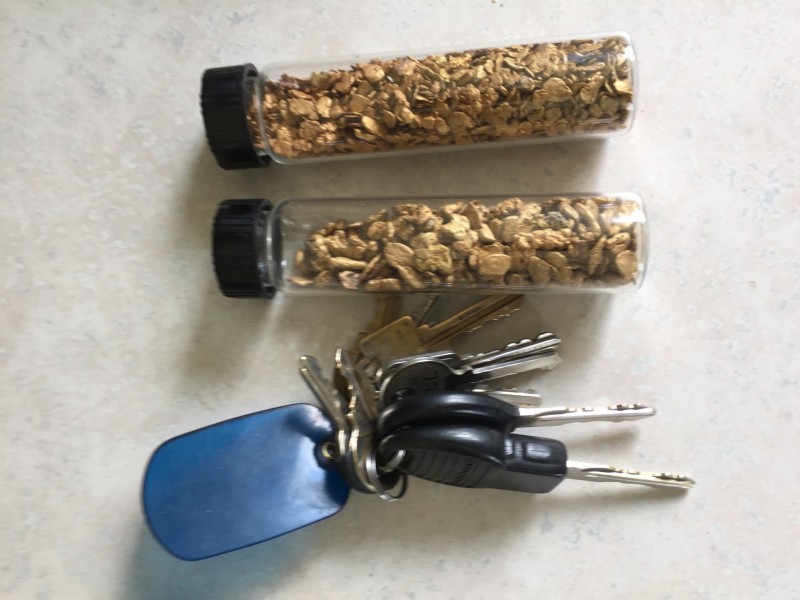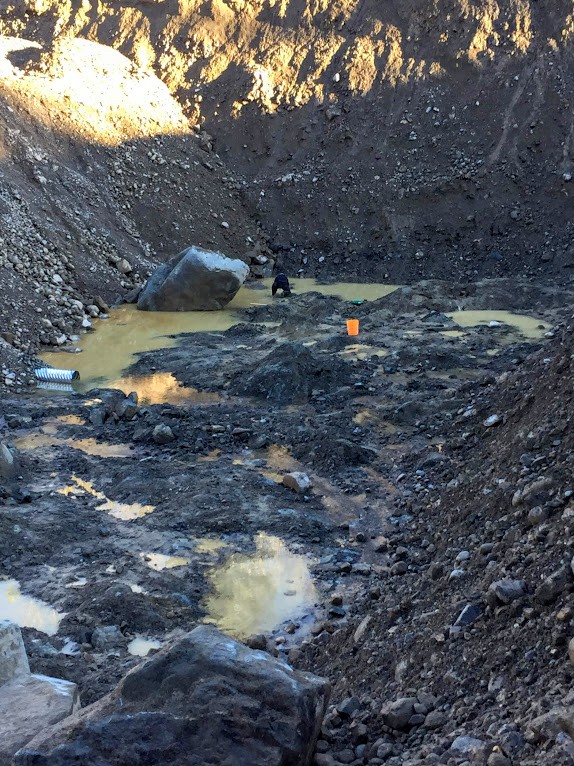-
Posts
792 -
Joined
-
Last visited
Content Type
Forums
Detector Prospector Home
Detector Database
Downloads
Everything posted by Lanny
-

Golden Grams Of Goodness: Nugget Shooting Stories
Lanny replied to Lanny's topic in Detector Prospector Forum
JW, thanks for posting the pictures of your moose-sized nuggets!?? Those are the incredible pictures I remember, the photographs of your halcyon days when you were out gathering sassy NZ nuggets. (You really do take great photos and often set off your nuggets in interesting ways for effect.) As they say in the movie, Mother Lode, there's always one place you haven't looked . . . So, I'm sure you'll get your coil over some chunky stuff again one "barmy" day. I appreciate you taking the time to find these amazing pictures, nicely done, and all the best, Lanny -

Golden Grams Of Goodness: Nugget Shooting Stories
Lanny replied to Lanny's topic in Detector Prospector Forum
Thanks JW, so many pictures filed away and so many stories yet to tell, but it seems that perhaps more people enjoy pictures rather than reading stories, but I can see their point as pictures can quickly tell a story as well. As for the chunky gold, some of it is bigger than some of yours, but I recall other pictures you've posted of finds you've made of meatier gold, so I wish you and Simon nothing but the best in your quest to beef-up with bigger gold. All the best, and thanks for your comments, and your friendship, Lanny P.S. There's a guy here in my town that's a NZ WWII veteran, not a lot of those great men around these days, and fewer veterans worldwide every minute, tremendous sacrifice they made for all of us. -

On This Day In 1869 The Welcome Stranger Nugget Was Found
Lanny replied to mn90403's topic in Detector Prospector Forum
Congrats on doing it, still on my bucket-list. All the best, Lanny -

Prospecting Suggestions Please?
Lanny replied to Swampstomper Al's topic in Detector Prospector Forum
Hi there Longhn, "Top ground is red with quartz, then about one to two feet of thick clay, bed rock, then bolder underneath... I think there maybe some gold in the bed rock". How did the bedrock get above the boulders? Is this broken bedrock that was stacked by hand-mining? Usually, the bedrock is below the boulders forming a foundation for the boulders to work down to. Have you found an literature on your area? For example, describing the material the gold runs in? For instance, smooth stream-worn rocks? Angular material? Only associated with larger material? Gold riding on the clay? False bedrock? These are all important things to know. I see your "well" is spanned by what look to be old narrow-gauge mining rails? Whatever you decide to do, remember the three rules of prospecting (after you've researched everything you can find about where the gold is usually found/what the gold travels with in your specific area: Rule 1, test. Rule 2, test. Rule 3, test. I hope you find a good spot and get some nice gold, as for your tunnel, does it continue for any length? Is that conglomerate over the tunnel mouth? If so, did the gold run under the conglomerate? Keep researching everything you can until you have/until you learn a few indicators to guide you in the search for gold in your area. All the best, Lanny -

Golden Grams Of Goodness: Nugget Shooting Stories
Lanny replied to Lanny's topic in Detector Prospector Forum
Here you go Fred. (I had no idea how long this would take . . .) Mountain scenery and that beautiful blue alpine sky. We grow tall mountains around here. The time of year when the bees get busy. Some of the ways the water moves around. All shut down getting ready for the move. Speed-panning wonder! This bedrock is heading uphill at an insane angle. My son trying a little high-banking, but he zeroed in that spot and quickly went back to detecting (just because a spot looks good, doesn't mean it is?). This bedrock has a great chance of hiding something . . . My robust, torquey blue mule. That diesel engine is just starting to get broke in (million mile Cummins wonders). My son cutting his teeth on the Minelab GPX 5000 (I hope his wife still likes me as he has a wonderful case of the fever!?). Look what the Gold Racer sniffed out: small stuff, and chunky pieces too! (The Bug Pro and the GPX accounted for a lot of sassy gold over the two days as well.) Some of the meat to go with the smaller potatoes. I think this picture says it all about the clichés about gold and rainbows. (Shot this picture from an excavation after a summer shower.) All the best, Lanny -
A nice chunk indeed that has some serious iron-stained/mineral-stained quartz? I wonder what the percentage of gold is? Something to get the heart pumping for sure if those chunks found their way under a coil! All the best, Lanny
-
Thanks again for what you've done, and I tried to absorb as much of what you were saying as I could, did not think you were long-winded but felt you were trying to be as descriptive as possible about a new process. All the best, Lanny
-

Golden Grams Of Goodness: Nugget Shooting Stories
Lanny replied to Lanny's topic in Detector Prospector Forum
Hi Fred, I've got to dive into my photos to grab some pictures for sure as I spent all of the free time I had writing the sections of the stories so far. It's just a time thing, but I have so many pictures (one of the curses [or benefits] of the computer/cell phone age). All the best, Lanny -

Golden Grams Of Goodness: Nugget Shooting Stories
Lanny replied to Lanny's topic in Detector Prospector Forum
Golden Bonanza Days, Part 2:In the meantime, I’d finished all of my adjustments on the Racer, and I went off to investigate a different spot, some way off in the excavation from the area my son was detecting, as I had seen some little pockets of intact channel that had some spidery cracks in the bedrock running outward from them on my initial walkthrough. After a few swings (no kidding), I had the coil over a soft sound. A bit of scraping later, and I’d trapped the signal in my scoop. Into the pan it went. (Now, please remember that I use a super-magnet on an extendable wand whenever I detect bedrock [worked recently or anciently], so it really helps eliminate ferrous trash, and this means that any target that goes into the scoop is non-ferrous.) After a few more swings, I’d hit on two more targets that went into the pans for my wife’s speed-panning operation. Then, a slew of targets went into the pans.Meanwhile, as I was collecting signals, my son was busy adding more targets to his pans. (I had two pans to fill, and he had two pans for target material as well.)During our nugget hunting, my wife set up her panning station in a convenient bedrock pool of crystal water, water about the temperature of glacial meltwater by the way, and she was ready to get her panning gloves wet (she uses those little gardening gloves that have rubber palms and fingers with a canvas back as they insulate well enough to take the sting out of the coldness), so she wandered over to my son to gather a pan of possible goodness, and she swung by me to grab one of my pans too.(To describe the site in more detail, there was a sloped ramp that led down into the excavation where the rock trucks had run back and forth to be filled by the excavator. There were the remnants of a pad by the ramp where the excavator had sat during the last scraping of the dirt for the last cleanup, the pad having been moved up above the level of the excavation so the last of the pay could be scraped from the bedrock.In opposition to this, the far end of the excavation had been worked first, the work proceeding backward in the direction of the exit ramp until the cleanup reached that location. What remained in the excavation or open-pit site were ridges of rising bedrock, deeper excavated low-lying areas where the bedrock was soft [or areas of contact zones where soft bedrock met hard] or where ancient channel material had gathered in natural gutters or larger crevices, and there were pools of standing water [I always check these with a waterproof coil] where seepage had found a way to fill depressions or where runoff from springs on the margins of the excavation had filled low spots. On a related note, some of the bedrock had been bent and warped by tremendous geological forces in the past, and these places held little concentrations of material left over from when the bedrock was super-hard enough to resist the might of the excavator’s bucket.In a few places there were small sections of friable rock [in this case slate] that when found, I always detect first, then later pan as those plates of perpendicular placement [in 90-degree opposition to the underlying bedrock] act as excellent gold traps, traps that were working in earnest as the dinosaurs plodded across the ancient streambed when large sections of the planet were in a more tropical state.As well, there were those aforementioned contact zones, always excellent places to detect as small slices of the softer rock were sometimes in place against the harder rock, or there were ledges, sometimes terraced, with bits of material intact, and these traps often produce some nice gold. [On a related note, I learned a long time ago to trust my detector, not my eyes when scouring bedrock. What I mean by this is that oftentimes bedrock appears to be solid, especially when is is of uniform color, so it seems a better use of time to detect areas where visible intact material is concentrated, but this is one of Mother Nature’s grand deceptions, whether the bedrock has been worked by recent miners or mother rock worked by the Sourdoughs.Mining tip for the rookies: always, always, always take the time to go slow to let the detector read the bedrock contours and surfaces, to check the little invisible gutters and pockets, and yes, to find the hidden crevices that snapped shut when some monstrous dinosaur tromped on it while crossing, or more likely, when some massive boulders tossed along those streambeds, by some titanic hydraulic event, forced their will upon the yielding bedrock.To be continued . . .All the best,Lanny -
To find old sites or new ones with this technology really does look intriguing. Thanks for your time and effort, and all the best, Lanny
-
All the best on your trip, and I hope you find one big enough to use as a door stop! All the best, Lanny
-

Golden Grams Of Goodness: Nugget Shooting Stories
Lanny replied to Lanny's topic in Detector Prospector Forum
The balance comes down to the expense for either renting a Vac-truck to do the job, buying a used one for that purpose, or buying a small excavator with the pivoting bucket. As the bedrock is not consistently rich, and as the bedrock is many times soft enough to allow the excavators and Cats with rippers to take sufficient bedrock, at which point does the cash outlay outstrip the potential income for the cost involved for alternative methods of bedrock recovery? Always a thing to ponder for good reason . . . All the best, Lanny -
All kinds of great advice coming out of this thread, thanks Northeast! All the best, Lanny
-
Great advice, thanks! All the best, Lanny
-

Golden Grams Of Goodness: Nugget Shooting Stories
Lanny replied to Lanny's topic in Detector Prospector Forum
Good to know, and I appreciate your kind sense of humour. All the best, Lanny -

Golden Grams Of Goodness: Nugget Shooting Stories
Lanny replied to Lanny's topic in Detector Prospector Forum
Many thanks for your kind words! All the best, Lanny -

Golden Grams Of Goodness: Nugget Shooting Stories
Lanny replied to Lanny's topic in Detector Prospector Forum
Much appreciated, and I'm glad you're enjoying the gold-chasing journey. The opportunity to chase the gold, given the conditions I enjoy, is wonderful indeed. All the best, and thanks for dropping in, Lanny -

Golden Grams Of Goodness: Nugget Shooting Stories
Lanny replied to Lanny's topic in Detector Prospector Forum
Not meant to be a tease, but hope you can make it to the next instalment.? Thanks for taking a moment to let me know you enjoy the stories, much appreciated. All the best, Lanny -

Golden Grams Of Goodness: Nugget Shooting Stories
Lanny replied to Lanny's topic in Detector Prospector Forum
Golden Bonanza Days, Part 1:I got the call last season for the chance any nugget shooter dreams of.A friend of mine owns and operates a large placer mining operation. They had been working an ancient channel deposit (60,000,000 years, plus or minus, but hey, what’s a million years here or there, right?) and as I wrote this account, they were in the final stages of moving all of their heavy equipment to anther site. So, I got a call that people usually only dream of ever getting.I was invited to bring my family to nugget shoot a section of virgin bedrock. After sixty million years, it was finally exposed to the sun’s rays once again, and as the entire mining operation was shut down, with no active mining in progress for the changeover, my buddy wanted us to come and check the bedrock for him before they had to do the reclamation work and bury it once more for perhaps another sixty million years.I couldn’t believe it! What a chance, perhaps the call of a lifetime . . .I called my son, who I’ve been training how to detect sassy nuggets, and he said to count him in. My wife, who is a speed-panning wonder of target-rich scoop dirt, said she was in too. So, we packed our gear and headed for the mountains.For whatever bizarre reasons the weather gods had last winter (2017-18), the weather was terrible right up until the first of May, and then it was like someone hit the sun-and-warmth switch for instant summer. The transformation was surreal and wonderful. Fresh pine heavily scented the valley. A wide variety of mountain song birds were back in force, the flowers were blooming on every slope, wild honey bees, heavily laden with pollen, buzzed a honey-hunter’s symphony. While high above, the hawks and eagles choreographed their ageless aerial ballet as they rode the invisible thermals of the cobalt blue expanse. In addition, red-throated, as well as iridescent green-breasted humming birds initiated impossible angles of changing flight as they darted from spot to spot while visiting the innumerable mountain blossoms. To say it was breath-taking is a feeble attempt to capture the impossible, and those of you that frequent the wild reaches of the Rocky Mountains already know of what I speak.We set up our gear, and I unpacked the feisty Makro Gold Racer and connected my shiny new sniper coil. I was going to take the Racer for a hard run, as I was still getting used to it, and with all of the ancient cracks and crevices exposed, I believed it had a good chance to sniff out some gold. The other nugget shooter, my son, would be learning more lessons on the Gold Bug Pro. (For final clean-up, I always check the bedrock with my GPX 5000 after running the legs right off of the VLF’s.)So, I set my son up with the Gold Bug Pro, outfitted with the 5X10 elliptical DD. I reviewed the basics of the detector with him (I love how quick the learning curve is on the Bug Pro), and off he went to a corner where the bedrock rose steeply, a jagged wall of bedrock rising close to 45 degrees up from the floor of the excavation, and that bedrock was iron hard (similar to some other bedrock we hunted later in the season) so there were lots of gutters, cracks and crevices visible that held intact material due to the hardness of the host rock. My son ground-balanced, adjusted his headphones, then made a few swings. He stopped dead right quick, then repeated a swing. With the numbers on the meter in the sweet zone (40-70 on the meter, if you’re familiar with the Bug Pro, usually depending on the size of the piece of gold), he quickly captured the target in his scoop and dropped it in one of our green plastic gold pans we’d already set out. A few more swings, and he dropped another scoop of target-rich dirt in the pan. Having got off to such a fast start, it looked like it was going to be a good day. To be continued . . .All the best,Lanny -

Golden Grams Of Goodness: Nugget Shooting Stories
Lanny replied to Lanny's topic in Detector Prospector Forum
JW, always great to hear from you, and I always appreciate your posts on detecting. I added a few pictures to the last post (Part 3) to give you a peek at a few things. Thanks again for taking the time to let me know you enjoy the posts, and all the best, Lanny -

Golden Grams Of Goodness: Nugget Shooting Stories
Lanny replied to Lanny's topic in Detector Prospector Forum
Golden Grams of Goodness: Part 3Even though the bedrock was super hard in that location, it did have some fractures, but it was a rare exception to find any breaks in the stone that had much depth due to the hardness of the rock. However, what that bedrock did have was lots of little gutters with bends indented into it, decorated with twists and dips, and those made for some great little gold traps for sassy pickers, lonely nuggets, and juicy flakes, and there was lots of gold to go around, and I do mean lots! (Pinnacles in the cut)When conditions would allow, we scrubbed the coils right tight on the bedrock listening for faint breaks in the threshold or for those aforementioned broader signals, and every time we’d get a hit, we’d shut off the detectors and go to work with the sniping tools. After cleaning the twists and turns of the little gutters, we’d detect them again and find gold that could now be heard because we’d removed so many ironstone chunks with the sniping tools and the super-magnets.However, the non-magnetic dark hot rocks (one less oxygen molecule from the magnetic ones I believe?) still caused trouble, but there were less of them compared to the the truly troublesome ones we’d got out of the way. (The iron bands couldn’t be dealt with by detecting though, and I’m sure we left gold behind along their edges when we finally ran out of time.) By continuing to scan the bedrock, we hit some nuggets in the 2-3 gram range as well, and a few bigger ones to boot—right sassy, beefy brawlers. Regardless of the bigger pieces, lots of flat nuggets were wedged down in any crack they’d been able to work their way into while travelling over that iron-hard bedrock, and we really had to work to liberate them. (Some smaller pieces of liberated gold)In addition, we took our time to carefully scan any clay or channel material that was stuck to the sides of those bedrock pinnacles I mentioned early in the story, and by careful scraping after we got a positive detector response along those sides (when we could), we captured a lot of additional pickers from their slopes. Having already learned from our previous finds in hot ground, we’d shut down the detectors after finding any detectable gold on around or near the base of the pinnacles as well, and it sure paid off with lots of nice gold we would have missed electronically. In retrospect, it was somewhat ironic that we had to revert to age-old gold gathering techniques used thousands of years ago because our modern electronic wizardry was overwhelmed and outclassed, but that just goes to show why it’s good to be well-rounded in gold getting techniques, with a healthy collection of excellent tools as well to use for specialized purposes; because, does anyone really know what they’ll be up against when Mother Nature’s been scheming and plotting to hide her gold?On a different note, we used the waterproof coils to search the bottom of the pools and we found some gold that way too, but not much as where the pools were, the bedrock had been softer which allowed the excavator buckets to dig deep. A Cheechako (greenhorn) and a Sourdough (seasoned miner) joined us in the excavation for a while, and they too found gold, with the lucky Cheechako hitting a nice multi-gram nugget (the size of my thumbnail) with his detector, a chunk that had been drug, with some larger rocks, off to the side of the bedrock drain that was channeling water into the culvert of the drain. We were happy for him, and happy for the Sourdough (a veteran of many a gold chase) too who sniped like a man possessed with the pure golden fever, a sight to behold! Well, he walked away with a nice catch of pickers and small nuggets in his bottle as he’d set up a little high-banker so he could process more material. However, neither of them came close to our tally in weight, but they sure had fun, and we did too.It was a great day, and I walked out with lots of nuggets in my gold bottle (that bottle had weight issues, good ones though) and my son did better than me as he went back the next day in the rain and rescued a third more gold than he’d gathered the previous day. As for me, I was content to just hunker down in my wet-weather gear and watch him have fun in the drizzle, and then I helped him haul his equipment out of the excavation up the boulder strewn slope back to the waiting 4X4 diesel. However, what should have been an easy exit from the site got highly sketchy in a hurry as the rain had caused a big slump right across the road by sliding muck down the north side of the excavation, with the mess beginning about seventy-five yards from where we were working. Moreover, it’s a good thing my diesel has lots of clearance or we’d still be glued there in the goo, but with the high clearance and the awesome torque of that diesel, it chewed us safely through. Now, if I’d have been in my gasoline-powered 4X4, which has lower clearance and not near the torque, it likely would have been a bad ending to a great gold trip. (Ironstone and gold) (High-torque, high-clearance blue mule.) All the best,Lanny -
All the best on your adventure, and the 705 is a good machine, but it does love to complain about the hot rocks. Perhaps you can rent a PI in Australia? That would solve your weight issue with flight restrictions, and it may be well worth it to pay for few lessons on how to run a capable PI from a local specialist; seriously it might be money well spent to learn how to hunt with some general settings that work well in the area you'll be visiting. I've rented a PI before (though not in Australia) and walked away with a handful of nice nuggets when I visited a goldfield with insane mineralization that simply wouldn't allow VLF's to operate. All the best, Lanny
-

Equinox Vs Tarsacci. Does This Equal More Nuggets?
Lanny replied to goldbrick's topic in Metal Detector Advice & Comparisons
Thanks for the clarification Steve, much appreciated, as is your open mind to links provided for informational purposes only. You do a wonderful job of running a fine, welcoming forum. All the best, Lanny -

Video - Equinox 800 Nugget Detecting Difficult Ground
Lanny replied to Steve Herschbach's topic in Minelab Equinox Forum
Those are tiny finds indeed . . . All the best, and thanks for posting the video, Lanny


